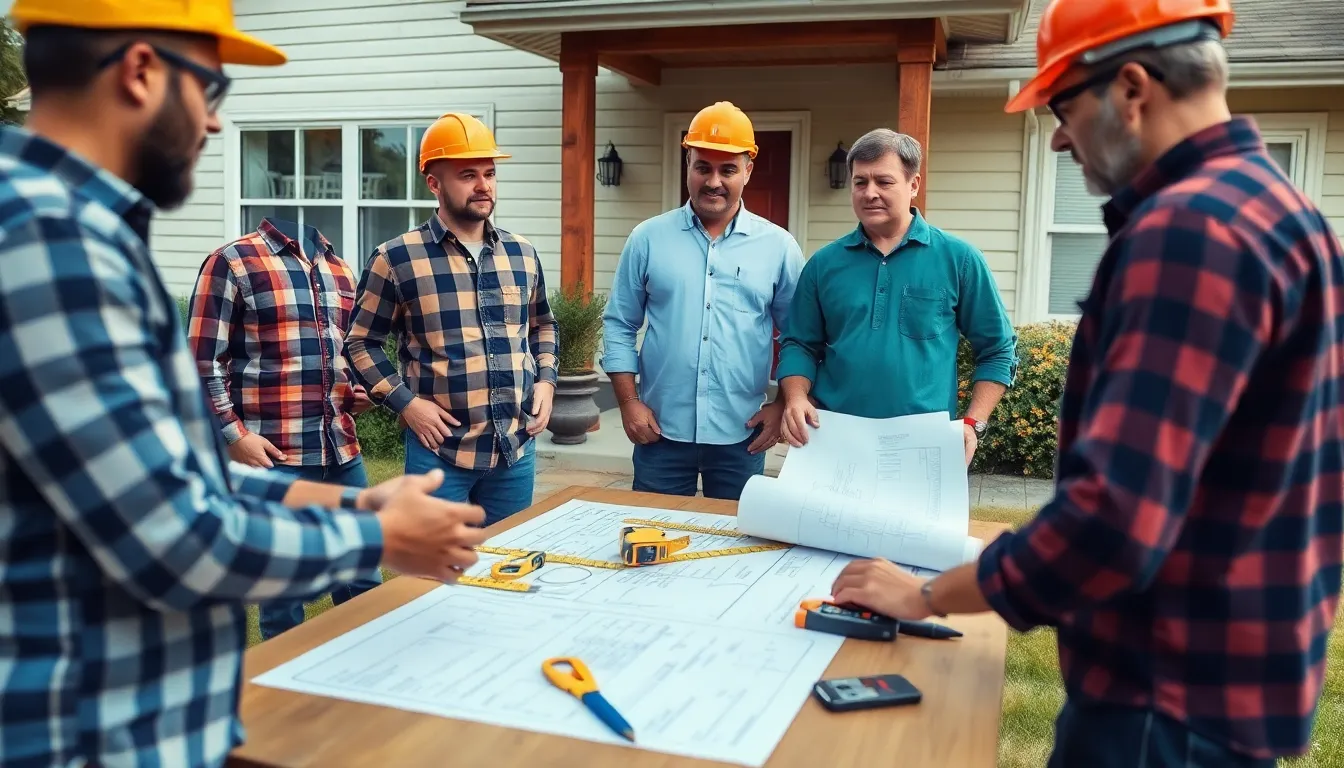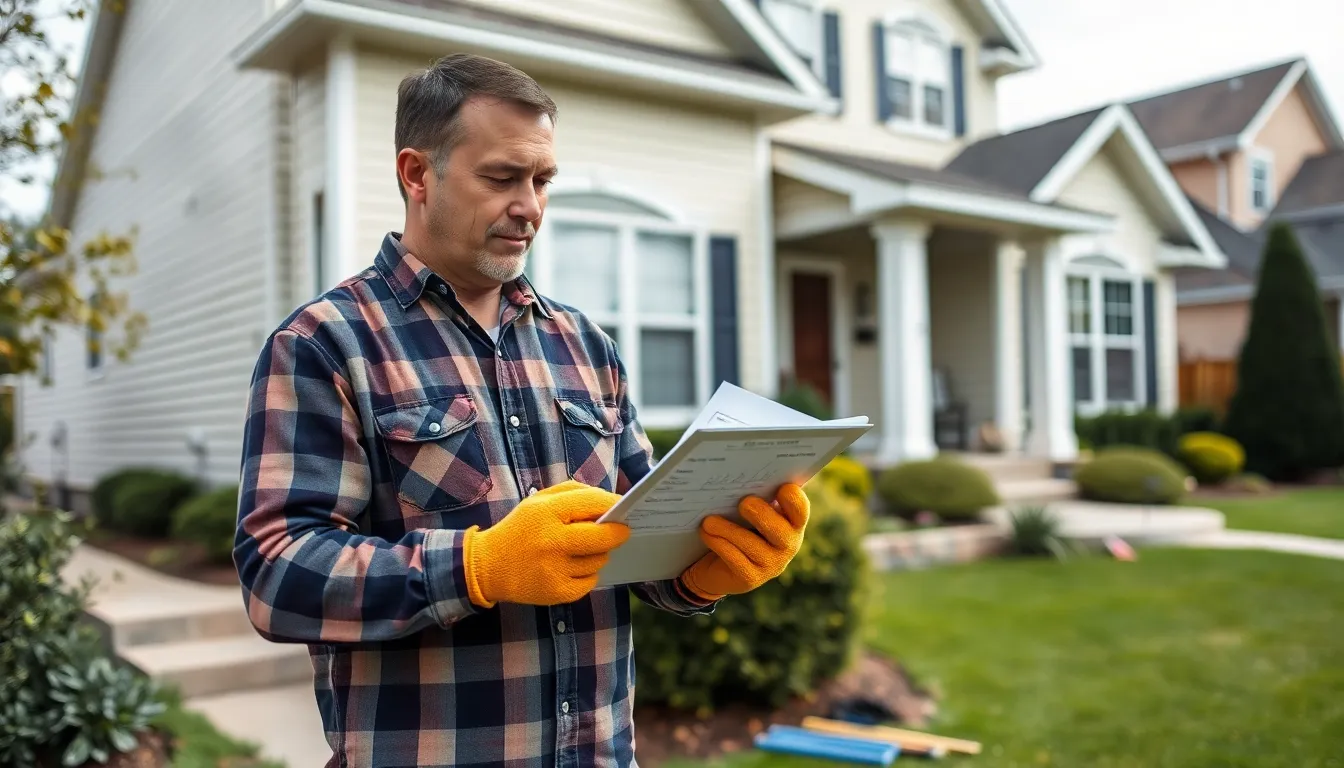Navigating the world of property repair estimates can feel like trying to decipher hieroglyphics while blindfolded. One minute you’re sipping coffee, and the next, you’re knee-deep in quotes that seem to be written in a secret language. But fear not! Understanding these estimates doesn’t have to be a Herculean task.
With a little know-how, anyone can turn confusion into clarity. Whether it’s a leaky faucet or a roof that looks like it survived a tornado, knowing how to read and compare estimates can save both time and money. So grab your favorite snack, sit back, and let’s dive into the art of mastering property repair estimates—because who doesn’t want to be the savvy homeowner who knows their way around a quote?
Table of Contents
ToggleUnderstanding Property Repair Estimates
Property repair estimates provide a breakdown of anticipated costs for various repair projects. Familiarity with these estimates helps homeowners make informed decisions and budget wisely.
What Are Property Repair Estimates?
Property repair estimates represent itemized costs associated with repairs. They typically include labor, materials, and any additional fees. Homeowners receive these estimates from contractors or service providers when assessing the scope of needed repairs. Knowing the details outlined in these estimates makes it easier to compare quotes and understand potential costs.
Importance of Accurate Estimates
Accurate estimates impact budgeting and project planning significantly. Homeowners avoid financial surprises when estimates reflect true costs. They also facilitate informed decision-making regarding which repairs to prioritize. An accurate estimate ensures that funds are allocated properly, minimizing delays. Seeking multiple estimates can uncover discrepancies, leading to better pricing and quality solutions.
Factors Influencing Property Repair Estimates

Multiple elements influence property repair estimates. Understanding these factors helps homeowners assess costs accurately and make informed decisions.
Type of Property
Type of property significantly affects repair estimates. For instance, commercial buildings often incur higher costs than residential homes due to specialized materials and labor. Historic properties might require specific restoration techniques that amplify expenses. Similarly, multi-family units may involve more extensive repairs because of shared systems. Each property type presents unique challenges and requirements that contribute to overall repair costs.
Scope of Repairs
Scope of repairs plays a critical role in determining estimates. Smaller tasks like painting or patching drywall generally incur lower costs than extensive renovations, which may include structural changes. The complexity of repairs also impacts pricing. Comprehensive jobs, such as roof replacements or foundation repairs, may necessitate specialized labor and increased material expenditure. Homeowners must clarify the full extent of needed repairs to receive precise estimates.
Labor and Material Costs
Labor and material costs constitute the bulk of repair estimates. Local market rates dictate labor expenses, varying by region and contractor experience. Furthermore, material prices fluctuate based on quality and availability. Homeowners should seek estimates that specify labor and material allocation for transparency. Differentiating between essential and optional upgrades enables homeowners to adjust their budgets as needed. Understanding these cost components empowers homeowners to negotiate and prioritize repairs effectively.
How to Obtain Property Repair Estimates
Gathering accurate property repair estimates helps homeowners understand costs and make informed decisions. Here are two primary approaches to consider.
Hiring a Professional
Engaging a qualified contractor streamlines the estimation process. Contractors provide detailed estimates based on professional experience and knowledge of local rates. Analyzing three to five estimates offers a clearer view of reasonable pricing and services. Each estimate includes information about labor, materials, and timelines. Homeowners should ask questions to clarify any uncertainties. Ensuring that contractors are licensed and insured protects against potential issues during repairs. Comparing contractors also highlights differences in materials and approaches, assisting homeowners in making the best choice.
DIY Estimation Techniques
Homeowners can utilize DIY estimation techniques to gain a basic understanding of repair costs. Identifying materials and their prices allows for an informed budget. Online resources and local home improvement stores offer valuable insights into costs. Creating a simple list of required materials, along with their prices, aids in forming a rough estimate. Additionally, measuring areas that need repair provides a clearer scope for labor estimates. Homeowners should note that while DIY techniques save time, relying solely on them may lack the detail a professional estimate provides. Balancing DIY insights with professional estimates leads to better decision-making.
Common Mistakes in Property Repair Estimates
Homeowners often encounter several mistakes when dealing with property repair estimates. Recognizing these pitfalls can lead to better financial decisions and successful repair experiences.
Underestimating Costs
Many homeowners express surprise at the final costs of repairs, leading to budget blowouts. Estimations often fail to account for hidden issues, such as structural damage or outdated wiring. Professionals frequently remind clients to include potential contingencies, typically 10 to 20 percent of the total budget, to cover unexpected expenses. Missing these considerations can turn a manageable project into a financial strain. Homeowners should seek detailed breakdowns that clearly outline every cost, enabling better planning and avoidance of unwelcome surprises.
Overlooking Important Details
Important details can significantly influence the accuracy of estimates. Homeowners sometimes skip critical aspects like the quality of materials or the scope of work required, leading to incomplete assessments. Contractors benefit from precise specifications, which provide clarity and eliminate ambiguity. Homeowners must prioritize these specifications to ensure accurate estimates that reflect true costs. Failure to address these details could lead to miscommunication and misaligned expectations, ultimately affecting repair outcomes. That’s why it’s vital to double-check every element of an estimate before moving forward.
Navigating property repair estimates doesn’t have to be daunting. By understanding the key components and asking the right questions, homeowners can make informed choices that save both time and money. It’s crucial to compare multiple estimates and consider factors like labor, materials, and the scope of work. This approach not only uncovers discrepancies but also empowers homeowners to negotiate effectively. Ultimately, being proactive in seeking transparent and detailed estimates leads to better budgeting and successful repair outcomes. With the right knowledge, homeowners can tackle repair projects with confidence and clarity.








